 Collage: 1. Rodarte, 2. Gonçalo Peixoto, 3. Mariano Moreno, 4. ON RUSH, 5. Joplin Atelier, 6. Acuamona. Courtesy of the brands
Collage: 1. Rodarte, 2. Gonçalo Peixoto, 3. Mariano Moreno, 4. ON RUSH, 5. Joplin Atelier, 6. Acuamona. Courtesy of the brands
Maroon, scarlet, burgundy, wine, cherry… There are many ways to refer to the range of dark reds with a blue or violet touch. This range of possibilities encompasses a captivating colour, synonymous with luxury, power and status, which seduces with its warmth and has fascinated both designers and artists throughout the centuries. This autumn 2024, it is once again taking centre stage on the catwalks, reaffirming its place as an elegant, versatile and personality-filled colour. Some call it “the new neutral”, but why does this dark shade of red have such a timeless, almost bewitching appeal? We will explore its history, psychology and the reason for its triumphant return in this season’s collections.
Origin of Colour. On Wine, Clothing and Theatricality
The garnet or burgundy colour Marsala is named after the famous red wines from the Burgundy region of France, known for their refinement. This connection makes it a colour associated with wealth, luxury and sophistication. In 2015, Pantone elevated this association – between fashion and wine – by crowning Marsala as the hue that would guide industrial design, fashion, beauty, furniture and interior decoration. For that year, the international colour authority imagined a world tinged with “a warm, yet elegant hue that is universally attractive and easily transposed into multidisciplinary arts”. Pantone considered Marsala to be equally attractive to men and women, capable of moving and awakening the sense of taste, as well as inciting creativity and experimentation with colour.
If we look back in history, the use of burgundy in textiles and clothing goes back much further than its contemporary name. Since ancient times, dark red dyes were prized for their rarity and the status they conferred on those who could afford to wear them. During the Middle Ages and Renaissance, burgundy dyes were extremely expensive due to the rare ingredients needed to produce them, such as the Tyrian purple snail or madder root. Consequently, this colour was reserved for aristocracy and royalty, who wore garments in dark reddish tones to symbolise power and authority. At the court of Henry VIII, for example, burgundy was a shade frequently used by high nobility, such as Mary Tudor, who wore an iconic burgundy velvet dress at her wedding to Louis XII of France in 1514. Another historical reference is found in the burgundy velvet and satin dresses worn by European royal women in the 18th century, such as Marie Antoinette, whose taste for rich, deep colours set a trend in court fashion.
In modern times, burgundy remains associated with theatricality and drama. Consider the shade of a theatre curtain and drapery. In cinema, this vibrant shade has been immortalised in films such as Gone with the Wind, where Scarlett O’Hara wears a majestic dress in this shade, designed to convey both power and sensuality. The colour has also been a key element in contemporary films such as Moulin Rouge, where it is used to enhance the drama and passion of the characters.
Why is it back in fashion this Autumn 2024? From the catwalk to the streets
Burgundy combines the passion of red with the depth of brown, evoking luxury, ambition and power. It is a versatile shade that suits different skin tones: on light skin, it highlights its luminosity; on dark skin, it provides sophistication without being strident. Its intensity varies depending on the material it is used on, acquiring a visual texture that can be modern and minimalist in fabrics such as satin, or luxurious and opulent in velvet.
Garnet is the star of the autumn-winter collections, both in monochrome looks and in daring combinations. From sixties trench coats combined with platform loafers and structured bags, as proposed by Sabato De Sarno for Gucci, to tailored suits in the collections of Roksanda and Ferragamo . In a more casual version, Lacoste opts for jumpsuits combined with oversized coats, creating a mix between comfort and style.
This shade also lights up autumn evenings, where fitted leather microdresses stand out in the collections of Thierry Mugler and Ermanno Scervino. Other proposals include bow tops and pleated trousers in the collection of Philosophy di Lorenzo Serafini, providing a second skin in burgundy that redefines discreet luxury. In addition, burgundy is combined with neutral tones, such as beige or midnight blue, in proposals by Victoria Beckham and Khaite, or with bolder colours such as fuchsia, in a bold bet championed by Pierre Cardin.
And in fabrics… What do we recommend?
At Gratacós, we fall in love with burgundy, a classic that never goes out of style. This shade is enhanced in luxurious fabrics that allow you to play with texture and movement. To get the most out of it, we recommend these materials:
1. Silks and satins: Ideal for elegant garments with a fluid drape that enhances the sensuality of the garnet.
2. Wool cloths: Perfect for coats and outerwear, transmitting warmth and sophistication in winter looks.
3. Velvet: Provides depth and a luxurious air that turns any garment into a special piece.
4. Lace and tulle: For romantic and feminine looks, ideal for evening events or more delicate garments.
Check out our seasonal collection in our online store and discover the fabrics that best suit your style. Don’t miss the opportunity to be captivated by this timeless colour!
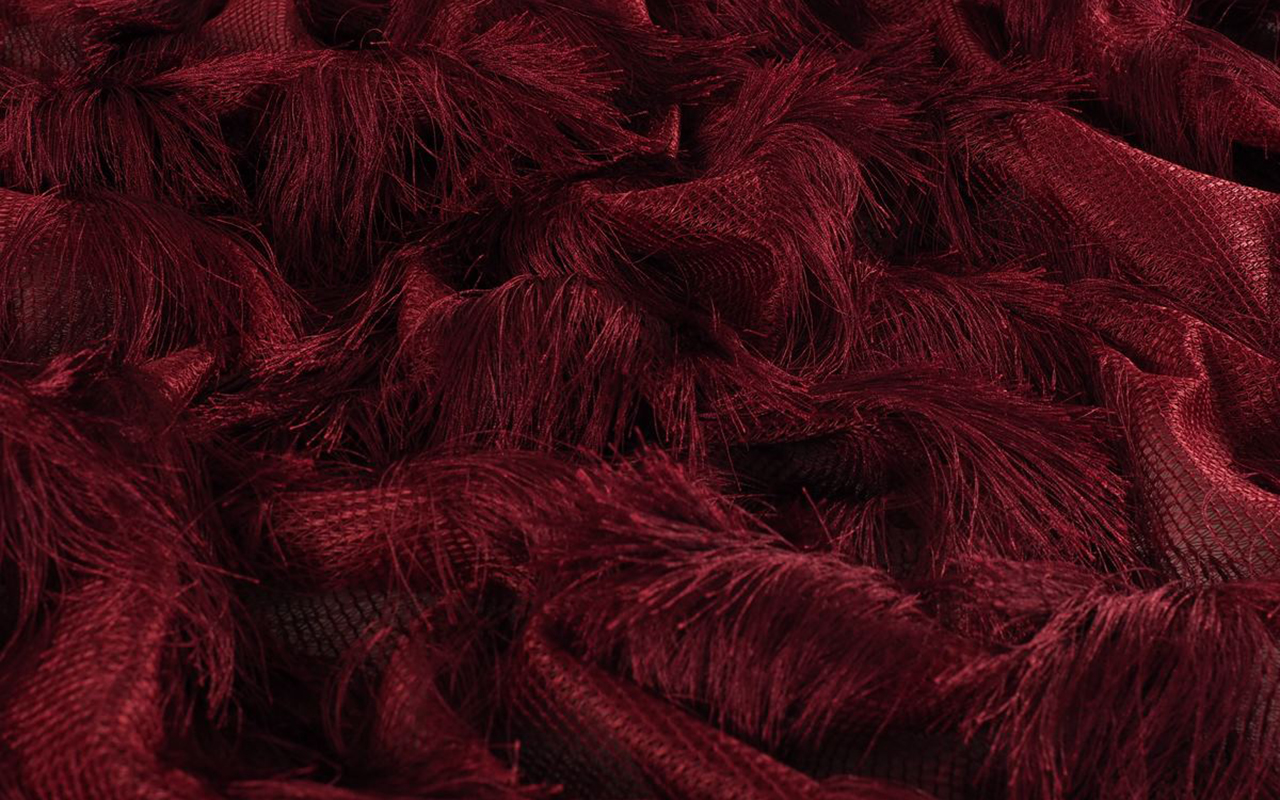



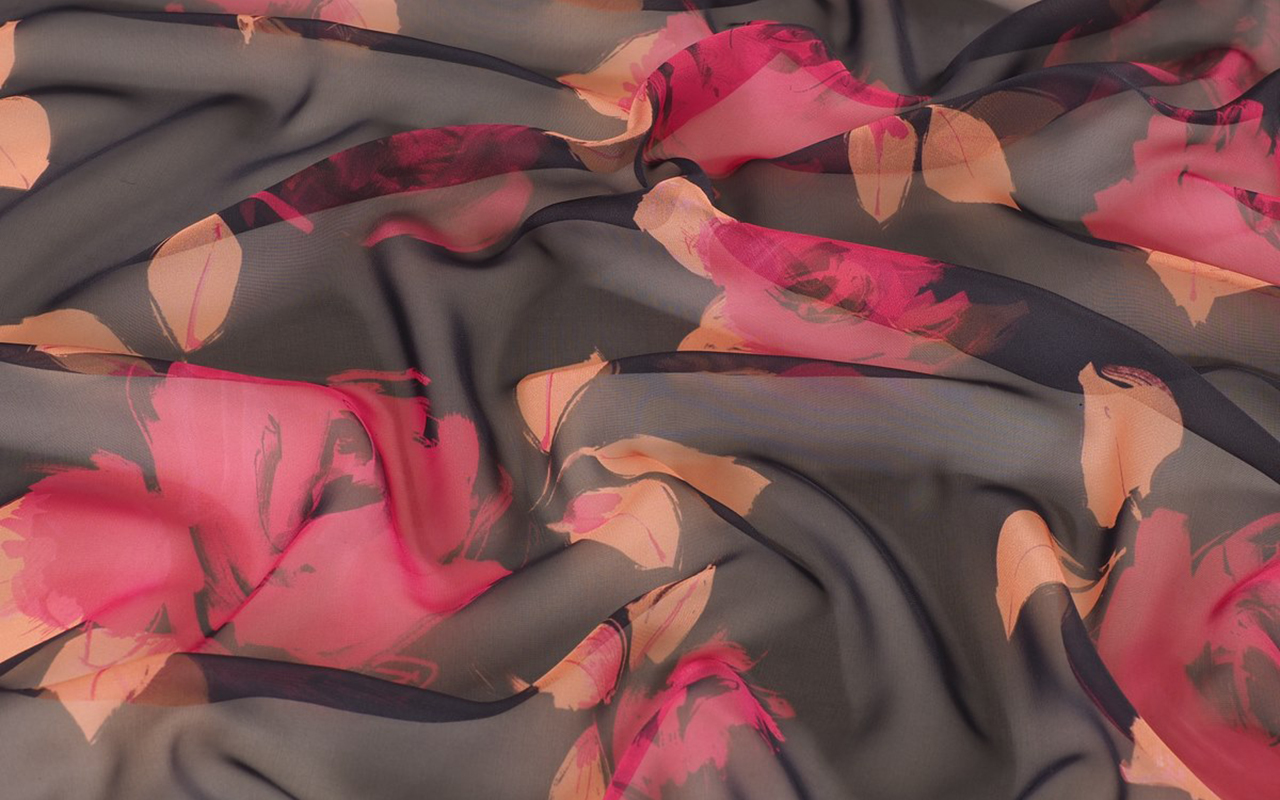
Jueves 26 septiembre 2024
 Featured in the collage: Lola Casademunt by Maite, Fely Campo, Álvaro Calafat, JCPajares, and Malne for MBFWMadrid. Courtesy of the brands.
Featured in the collage: Lola Casademunt by Maite, Fely Campo, Álvaro Calafat, JCPajares, and Malne for MBFWMadrid. Courtesy of the brands.
At Gratacós, we are always keeping an eye on the most important catwalk shows in Spanish fashion, looking for those surprising looks that are created with our fabrics. We love to see how each designer adds their personal touch and transforms our fabrics into authentic works of art in motion. This constant search for creativity and innovation inspires us deeply.
At the latest edition of Mercedes-Benz Fashion Week Madrid, held in September 2024, we confirmed once again that many designers trust in the quality and versatility of our fabrics to bring their collections to life. This year, artisanal and sustainable fabrics have taken centre stage, highlighting a clear focus on recycled, natural and technological materials. Not only do they make garments look amazing, but they also tell stories full of purpose.
Here are some of the most outstanding looks from the Spring -Summer 2025 collections, where our fabrics have been an essential part. It is fascinating to see how each designer contributes their unique vision and plays with textures to set trends that do not go unnoticed.
Alvaro Calafat
In his new collection ODDITIES ODYSSEY, Álvaro Calafat takes us on a journey into the past, evoking the old cupboards of curiosities where the strange and the fascinating coexist. Inspired by collectible objects and mysterious images, the designer from Malaga has created a proposal that mixes the classic with the innovative, breaking down the barriers between fashion and art.
The standout pieces include impressive volumes and constructions using 3D printing, one of the brand’s hallmarks. Hand-made textures and techniques such as cyanotype add a handcrafted touch that reinforces the collection’s unique aesthetic. Each garment becomes a canvas for experimentation, where the surreal comes to life through appliqués and embroidery.
The firm maintains its commitment to sustainability, emphasizing natural and high-quality fabrics such as silk, cotton, leather and tencel. The brand’s classic bomber jackets are reinterpreted with surreal details, elevating their design to another level. This collection reflects Álvaro Calafat’s commitment to innovation and respect for the environment, always with that air of mystery and sophistication that characterizes the firm.
Fely Campo
With “ Lei Zu”, Fely Campo invites us on an aesthetic journey along the mythical Silk Route, fusing history, legend and fashion. This luxury ready-to-wear collection features 29 sophisticated looks, starting with the masterful use of tweed and intertwining with artisanal silks brought from Guangzhou. Each garment celebrates textile richness, where opulence and subtlety meet.
The volumes of taffeta, the lightness of organza and printed brocades combine to create pieces that stand out for their precision in cuts and careful silhouettes. The collection begins with more structured shapes and tailored suits, evolving towards a more fluid aesthetic with shirt dresses and maxi lace kaftans that mesmerize with their movement.
The colour palette of “ Lei Zu” is a visual poem: crystal blues, pearly whites and soft lilacs mingle with acidic limes and radiant pistachios. With golden brushstrokes on Chinese silks, light plays a fundamental role in this proposal, which goes beyond being just a collection; it is a tribute to the essence of fashion and the magic of the Silk Road.
JCPajares
JCPAJARES surprises us with “ANNUAL 25,” its fifth annual collection, where the essence of summer and winter intertwine in designs that celebrate craftsmanship and innovation, all with a strong environmental commitment. This proposal highlights the new artisan luxury, the result of a collaboration with master craftsmen from Castilla-La Mancha, which revives centuries-old techniques in danger of extinction, giving them a contemporary feel.
The collection is a true feast for the senses, with materials including ceramics, blown glass, hand embroidery, crochet and painted prints, all crafted on historic looms. Spanish wool, often considered waste, is brought back to life, while leather and wicker accessories add a unique touch to each look.
“ANNUAL 25” is an ode to sustainability, where social responsibility and animal welfare are fundamental pillars. Oversized silhouettes and innovative patterns combine with prints evoking sunsets, creating pieces perfect for both day and night. The collection includes feathers, ruffles, cut-outs and goth details, made of wool cloths, silk crepes, taffetas and faded denims, along with tulles and fabrics adorned with rhinestones and sequins with floral motifs.
In each garment of “ANNUAL 25,” craftsmanship and modern aesthetics merge, offering a visual and sensorial experience that highlights the quality of the materials and real traceability, ideal for those looking for unique pieces with history.
Lola Casademunt by Maite
LOLA CASADEMUNT BY MAITE ‘s new collection is inspired by the rich Japanese culture, with geishas as muses. This proposal captures the femininity and delicacy that characterize these emblematic figures, bringing them to life through garments adorned with floral details and glitter, in a vibrant palette that evokes the iconic kimonos.
Fluid and delicate fabrics are combined with more structured and casual materials, creating a dialogue between tradition and modernity. Stitched collars, embroidery and bows intertwine classic elements of geisha costumes with a contemporary style, while wide volumes on skirts and trousers and flowing sleeves add movement and elegance to each look.
Fitted dresses and geometric patterns enhance the silhouette, adding a touch of sophistication. Accessories are essential in this proposal, including okobo, traditional sandals, and sashes that imitate the obis of kimonos, all designed with the colors and prints characteristic of the collection.
“Spring/Summer 2025” by Lola Casademunt by Maite offers a contemporary take on Japanese aesthetics, fusing the traditional with the modern in a fresh and sophisticated proposal. Each piece not only celebrates cultural heritage, but also adapts to the modern lifestyle, making this collection an ideal choice for those seeking elegance and distinction in their outfits.
Malne
Malne, the luxury label created by renowned designers Paloma Álvarez and Juanjo Mánez, has presented “De Rerum Natura.” Inspired by the poem by Roman poet Titus Lucretius, this collection for the upcoming summer season celebrates nature and is a journey toward happiness and environmental awareness.
The proposal focuses on epicurean fashion, using natural fabrics such as linen, raffia and silk, as well as animal and floral prints that evoke the essence of spring. Each garment reflects freedom and connection with the outdoors, ideal at this time of year when it invites you to enjoy leisure time away from the hustle and bustle of the city.
The silhouettes are soft and fluid, combining haute couture elements with a feminine approach. Malne pays homage to classic corsetry, using lace and corsets that wrap the body with elegance. The firm remains faithful to its principles of creating unique fashion with an authorial message, highlighting its commitment to craftsmanship and slow fashion, becoming one of the pioneering brands of the movement in Spain.
“De Rerum Natura” is not just a collection, but an invitation to reconnect with nature and enjoy life to the fullest. Each piece in this limited edition collection is designed for clients seeking luxury and exclusivity, reaffirming Malne ‘s position in the world of high-end ready -to- wear.
 Creative collage featuring looks by Marta Martí, By Sophie, and Mariano Moreno.
Creative collage featuring looks by Marta Martí, By Sophie, and Mariano Moreno.
Traditionally associated with spring, floral prints are stepping out of their comfort zone to take on a new role during the cold season as well. This trend demonstrates its beauty, versatility and timelessness, characteristics that are ideal for a wardrobe that is not so concerned with passing trends, but with a style that lasts and is therefore immune to the passage of time.
This autumn, flowers are once again taking centre stage, proving that they can also provide warmth, colour and elegance during the colder months. An example of this is the new September window display that we have just launched in our space in Barcelona, embraced in warm colours ranging from brown to maroon and orange, with leaf and flower prints evoking the beginning of autumn.
Below, we will explore the origin of floral prints, their evolution in the fashion world, current trends and how major brands have reinterpreted this trend in their most recent collections. Without forgetting, of course, the new fabrics and items that we already have available in our online store.
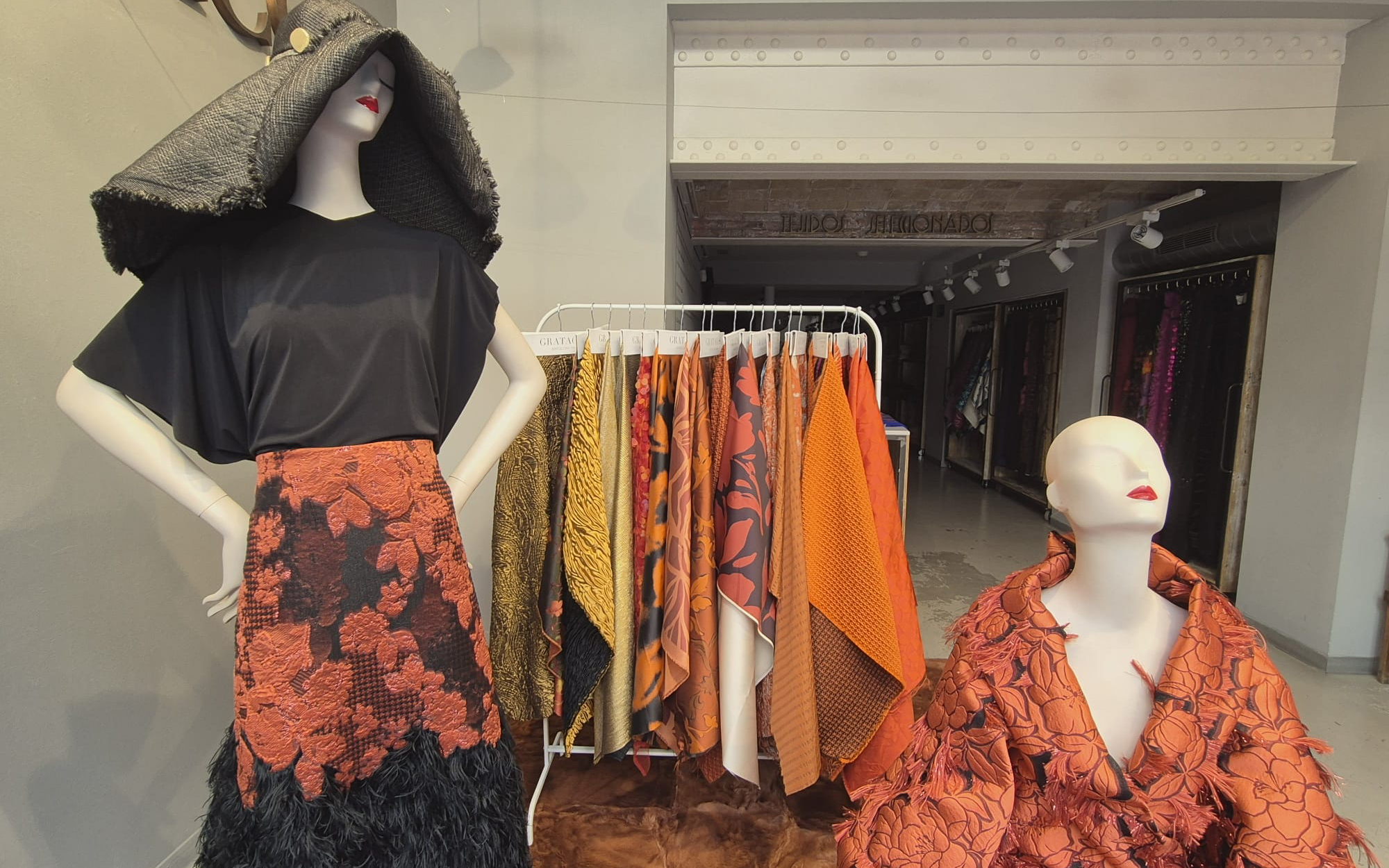
Origin and popularization of floral prints
Floral prints have a long history dating back centuries. Originating in Asia, particularly China and Japan, textiles with floral motifs arrived in Europe via the Silk Route. In the 17th century, Indian fabrics with floral prints, known as “chintz”, became popular in Europe, sparking a trend that has continued to evolve.
Their popularisation in contemporary fashion is historically more recent. The rise of floral prints can be traced back to the late 19th and early 20th centuries, when the Art Nouveau movement adopted flowers as a key motif in textile design. However, it was in the 1960s and 1970s that these prints really reached a large number of people, thanks to the hippie and bohemian countercultural movements, which embraced nature as a form of personal expression and a symbol of rebellion against the values of society at the time.
Why do flowers never go out of style?
As we mentioned at the beginning of the article, floral prints have stood the test of time thanks to their versatility , adding a touch of romance and femininity. These designs can be adapted to a wide variety of styles, fabrics and garments, being essential both in a light summer dress and in an elegant transitional jacket. Floral prints bring freshness to any outfit. In addition, there is an emotional connection with nature that awakens feelings such as love, renewal, life and serenity. In a world increasingly dominated by technology and artificiality, floral designs connect us with nature and remind us of the ephemeral beauty of flowers.
Floral prints are also incredibly adaptable to different styles and eras. Among the most recognizable categories are:
1. Abstract Flowers: Modern designs with artistic strokes that mix colours and unusual shapes.
2. Botanical flowers: Motifs that imitate nature or scientific illustrations, with a more realistic style.
3. Vintage Flowers: Inspired by the 1960s and 1970s, with warm colours and psychedelic shapes.
4. Dark flowers: With deep tones and dark backgrounds, which provide an air of sophistication and mystery.
Another reason why floral prints never go out of style is that they are an expression of individuality and define each person’s style. A bold and striking floral print in vibrant tones is not the same as a more subtle and delicate one in neutral tones. In between the two extremes, there is an infinite variety of options to choose from.
The beauty of flowers has also been a recurring theme in the inspiration of artists throughout history, from the Renaissance, through botanical art and the vision of the Impressionists, to the most avant-garde designers. Today, it continues to be an inexhaustible source of inspiration in various contemporary disciplines. In fact, in the field of fashion, practically no collection of the main luxury brands completely omits floral prints. And finally, a less obvious aspect: floral prints are flattering for all ages . They are visually pleasing and harmonious patterns that bring joy, vitality and freshness to the face, raising self-esteem. For this reason, floral prints remain a constant trend in all seasons.
How are floral prints being worn this season?
For the autumn-winter 2024/2025 season, floral prints are presented in innovative ways. Key combinations include layering and contrasting, mixing floral pieces with garments in textures such as wool, leather or denim for a modern contrast. The “total floral look ” also stands out, i.e. flowers from head to toe through long dresses and coordinated outfits with floral prints of different sizes. In the cold season, flowers predominate on dark backgrounds in shades such as burgundy, olive green, mustard and navy blue, perfect for autumn. In addition, accessories with floral details, such as bags, scarves and shoes, complement the more sober outfits and bring a fresh touch.
Discover the floral prints that suit your tastes and needs in our new season catalogue. Here you can find what suits you best!


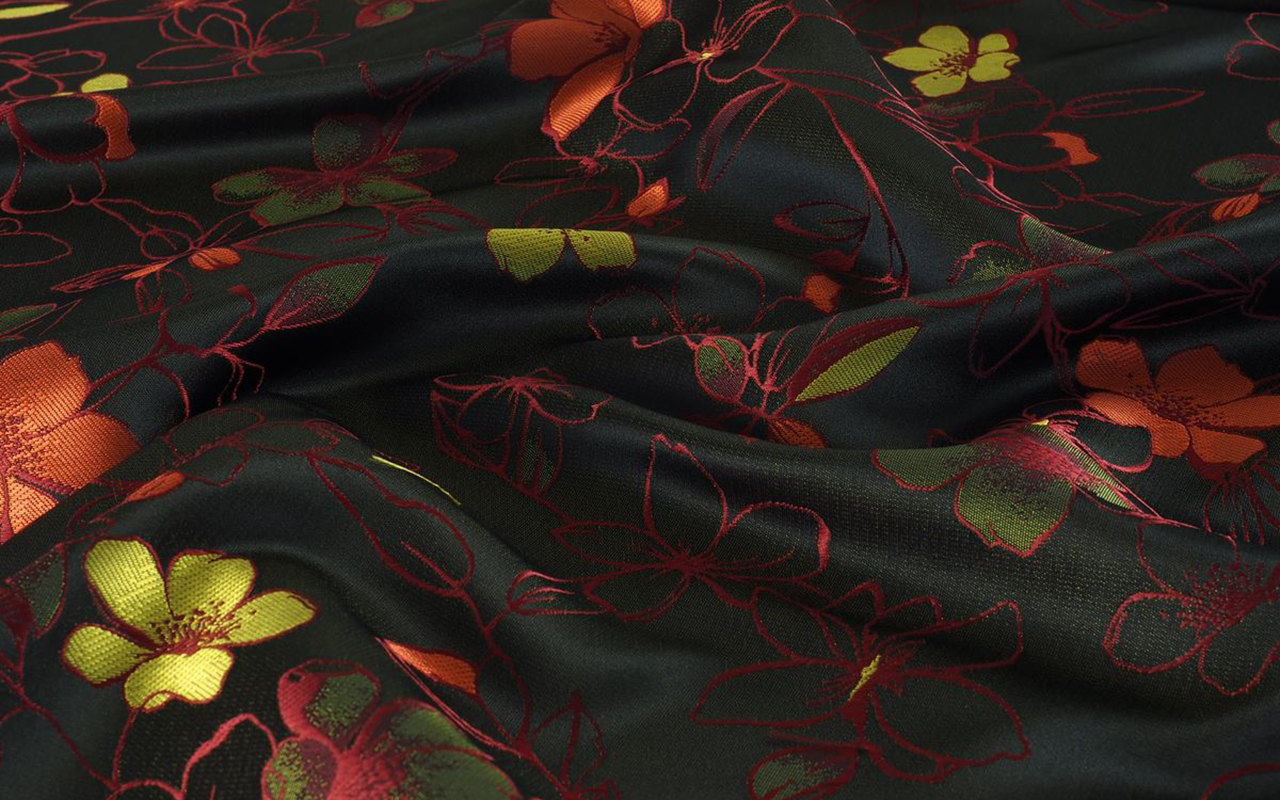
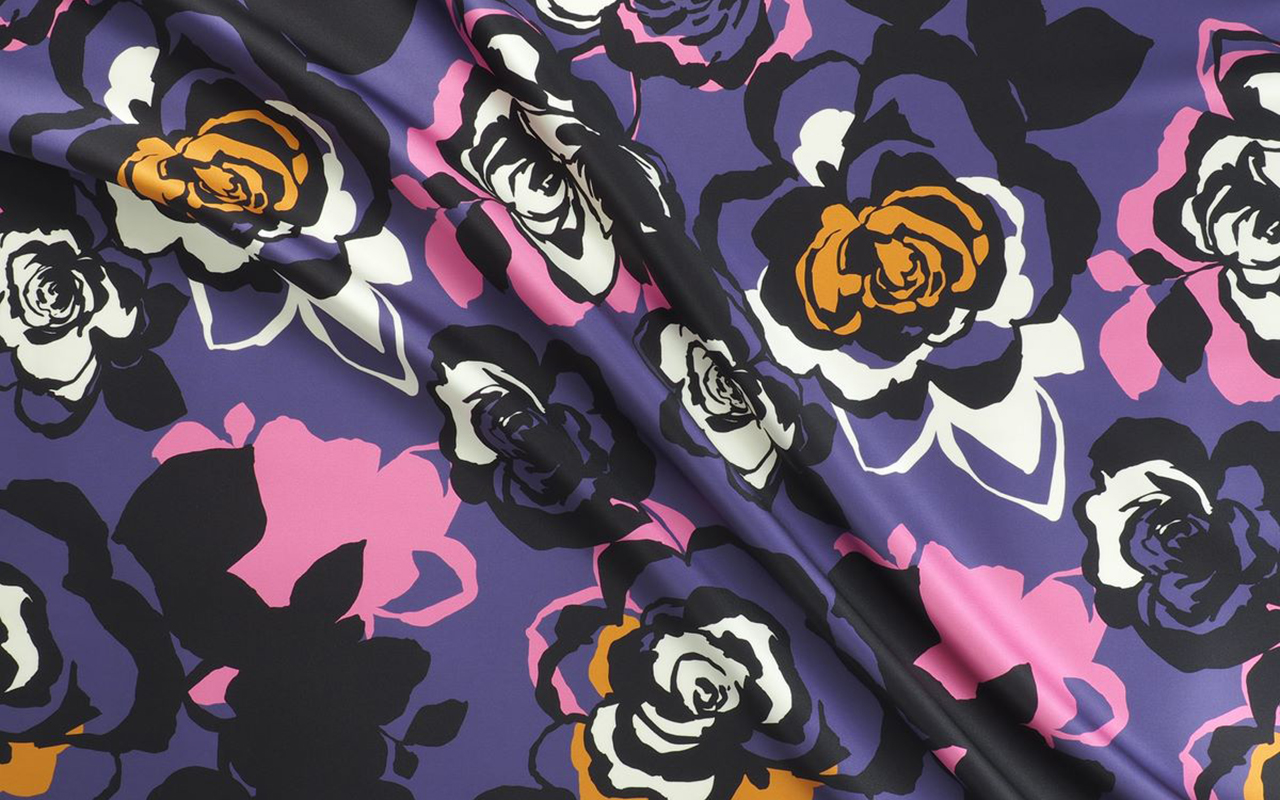
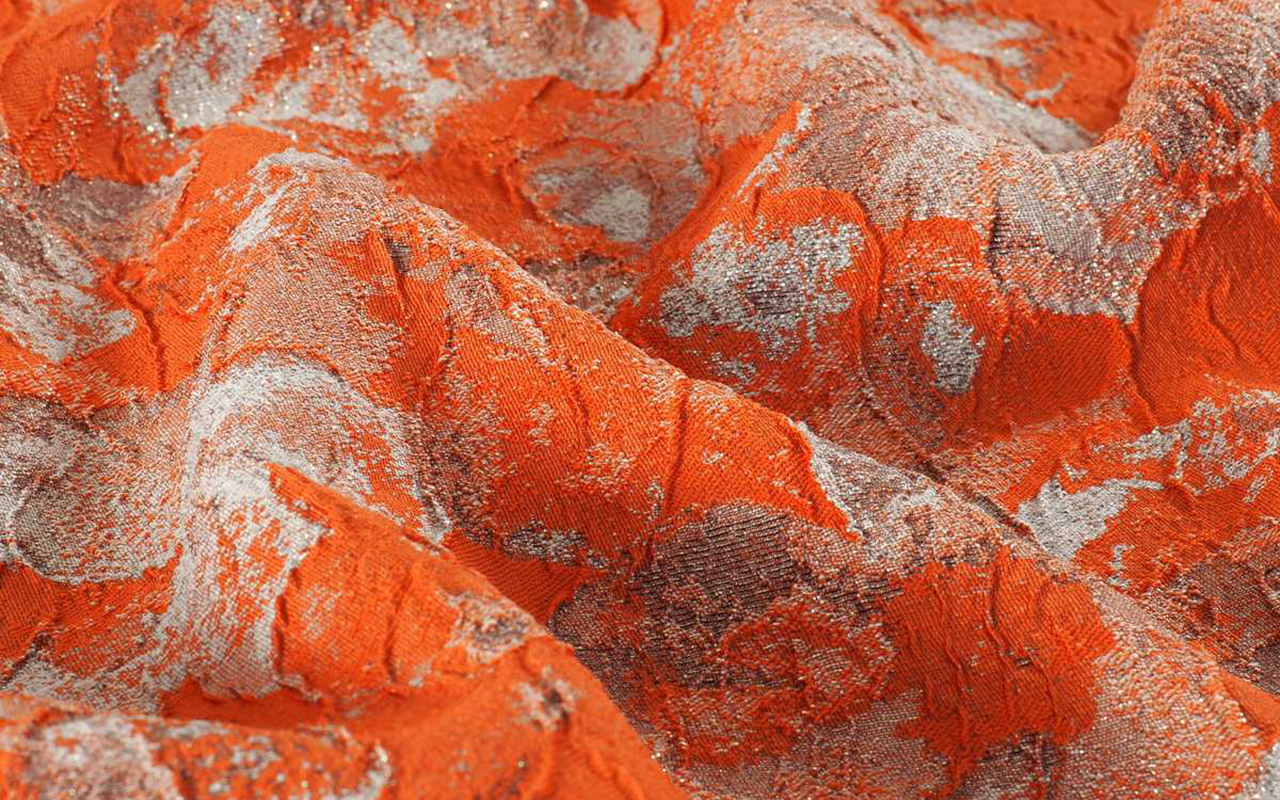
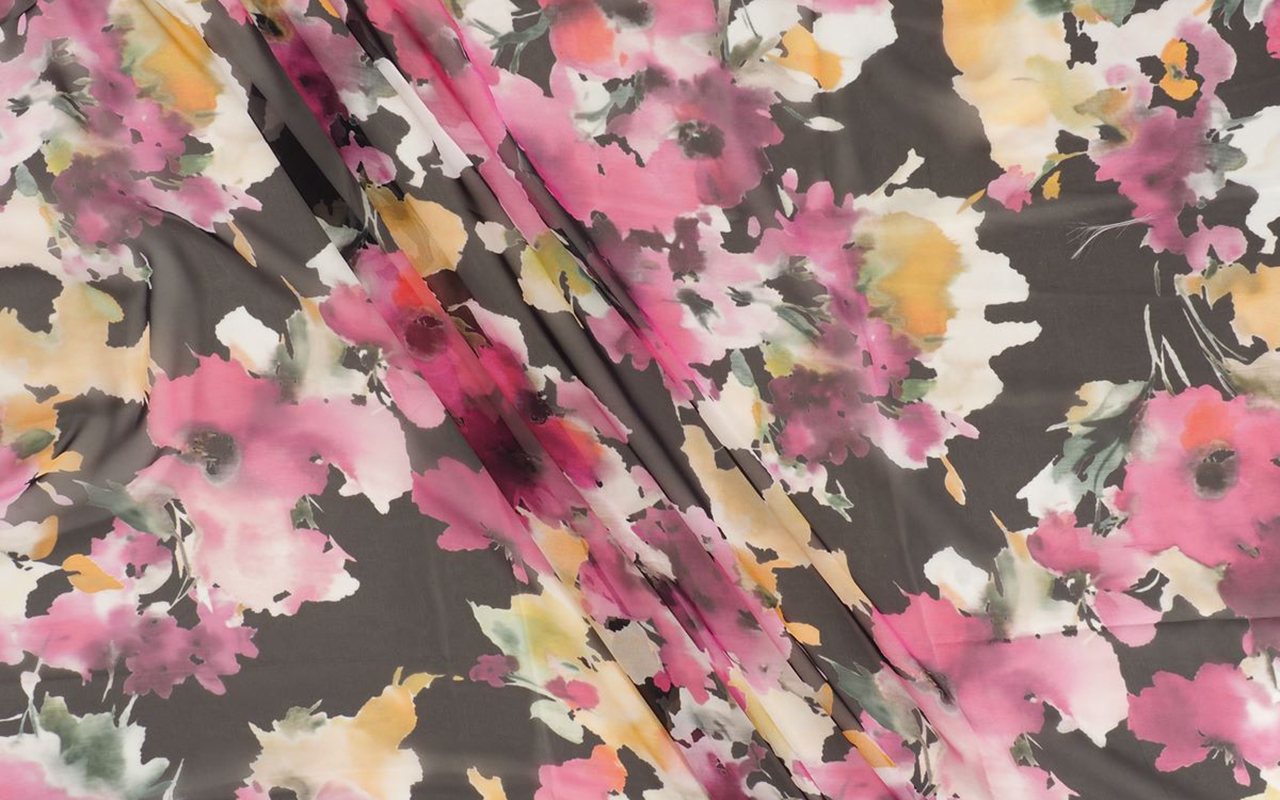
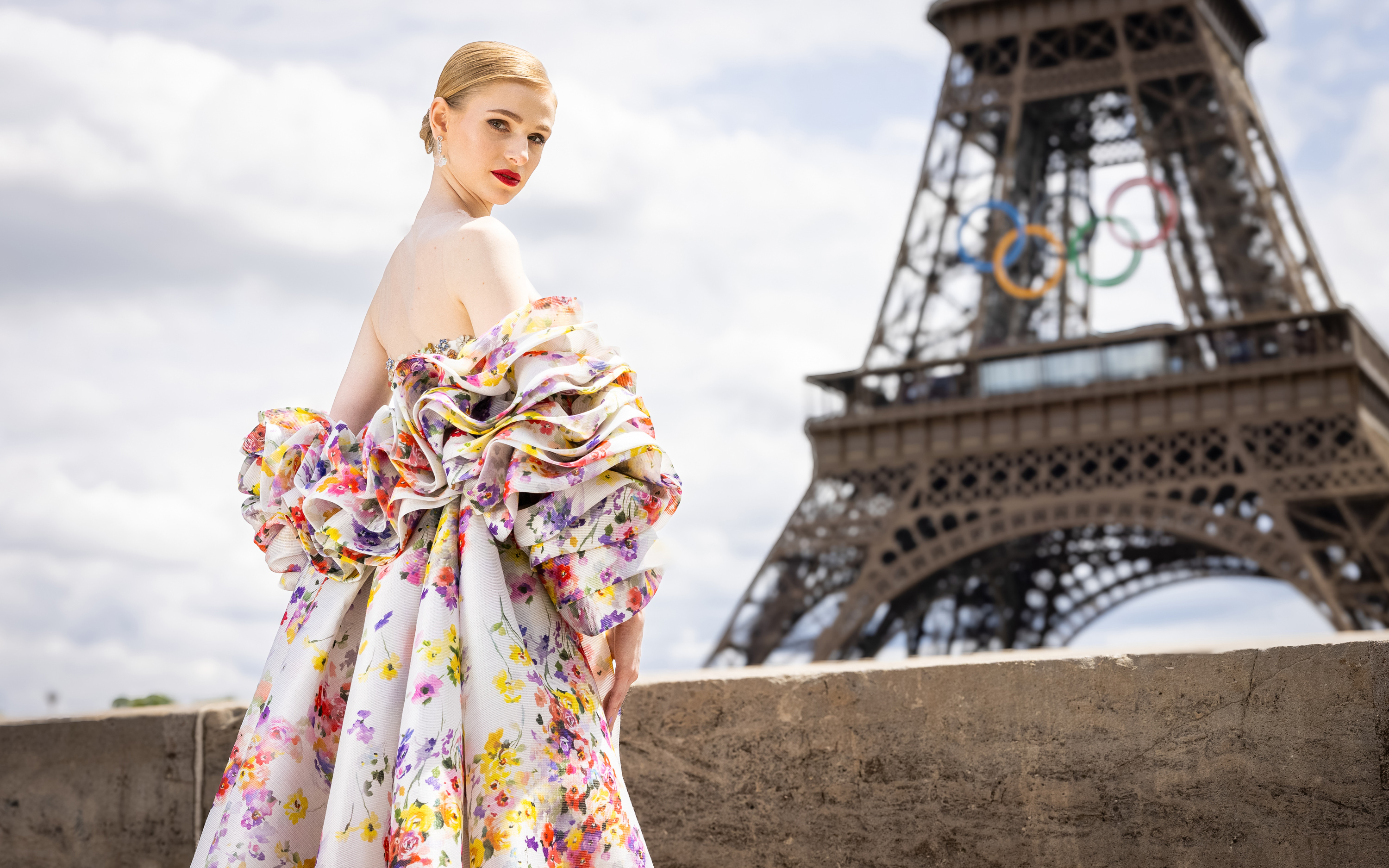 The Olympic Issue. A stunning editorial by Mariano Moreno and Vogue World Paris 2024.
The Olympic Issue. A stunning editorial by Mariano Moreno and Vogue World Paris 2024.
Fashion, a reflection of each society, is present in all areas and silently analyzes what it represents. At the Paris 2024 Olympic Games, one of the largest showcases in the world, it could not be less. Millions of eyes of different nationalities have observed the presentations of the uniforms in recent days, and will analyze, without being experts in the matter, the details of the opening show with their clothing created for the occasion, as well as the outfits of the athletes who will star in each of the sporting feats. We are curious by nature, and the Olympic Games teach us that style does not have to be at odds with the competitive spirit.

What must be considered?
Uniforms represent the media focus where the relationship between fashion and sport becomes more evident, especially in recent years. This relationship is beneficial as long as one does not engulf the other, something that these days is giving something to talk about both for its successes and for some mistakes, generating a large number of memes. Behind every uniform is a needle: the participation of a renowned designer or brand that promises to take the relationship between fashion and sport to a new level. Although aesthetics are key when representing the culture and style of each country, we must never forget the main objectives of these special suits: comfort and functionality. An Olympic uniform must be practical. It is at the service of athletes and its mission is to ensure the best performance. Furthermore, they are not worn by models with normative and standardized measurements, quite the opposite. Athletes champion a diversity of bodies with diverse morphologies and this physical diversity must be taken into account when looking for a design that feels good and is comfortable. That said, combining aesthetics with functionality is no easy task, and this is reflected in the results. Everyone wants to project a cool and modern image of their country, after all, athletes are the representatives of their land in the eyes of the world, but no one wants to look ridiculous or wear clothes that look like a moving flag. Therefore, the uniform also plays an important role in the confidence and self-esteem of each athlete.

Most representative uniforms of the Olympic Games
The different delegations have presented the uniforms that their athletes will wear throughout the competition. The proposals are very varied, seeking this perfect formula between modernity and identity, and aesthetics with functionality. Some countries, such as Italy and France, have taken the opportunity to show the great fashion design potential they have. Other delegations, such as Spain or Japan, have presented more practical proposals that are far from design. We review the most interesting proposals without overlooking some successes and errors.
As host country, France has collaborated with Le Coq Sportif and Stéphane Ashpool to design a uniform adapted to both Olympic and Paralympic athletes, reflecting the essence of the culture and love of sport of the host country. The nineties-inspired t-shirts and sweatshirts are already a bestseller by achieving a fusion between fashion, sports and patriotism without fanfare. In the United Kingdom they have opted for a brand that represents English design and elegance: Ben Sherman. Dressed by mods in the 60s, this brand has always been characterized by encapsulating the magic of the unique British style. In addition to the colours of the Union Jack, the brand has added flowers to almost all the pieces in the Olympic and Paralympic collection.
Italy has trusted one of the great names in the history of fashion: Giorgio Armani. Their designs present a set of elegant and minimalist garments with navy blue as the main colour. On the sweatshirts, the word “Italy” in large white letters captures all the attention. Some critical voices claim that the result has been a bit dull, due to high expectations. The United States has once again trusted Ralph Lauren, a name synonymous with American fashion, to design its team’s uniforms. It has been doing so since 2008. This time, with a focus on sustainability, the uniforms are made from recycled materials, proving that eco-friendly fashion can also be stylish. Red, white and blue accents pay homage to the American flag, while modern silhouettes ensure maximum performance and comfort. Although the official uniform has been well received, Nike’s women’s track and field jersey has not been without controversy. Lauren Fleshman , former United States champion in the 5,000 meters, criticized the technical suit for its poor coverage.
Spain has opted for sustainability as a central axis. The Joma brand, in charge of the official equipment of Spanish athletes, has designed a collection that fuses tradition with modernity, making garments in high-performance fabrics inspired by the carnation, capturing the essence of Spanish culture with a contemporary touch. The kit has received mixed reviews: while some praise the chosen aesthetic, others compare it to the Iberia uniform. In Japan, faithful to their minimalism, they have trusted Asics, a flagship of the Japanese country, with a non-artificial proposal so that all the attention goes to the achievements of the athletes.

Other uniforms that have received good reviews have been those of Ethiopia. Adidas has created a uniform with a current and modern design for Ethiopian athletes. In Canada , Lululemon has designed a summer uniform focusing on adaptability, thermal comfort, fit and functionality, and national pride. The gender-neutral kit combines functionality and style through innovative construction and high-performance fabrics, with modern silhouettes and Canadian-inspired prints. In Australia, some critics have pointed out the length of the kit skirts and trousers. The Australian uniforms, designed by Sports Craft, present some similarities with Spanish clothing.
Finally, although in stylistic matters the colours vary, there is no doubt that some countries have won public opinion with sports uniforms that deserve an Olympic medal. This has been the case of Haiti. Haitian-Italian designer Stella Jean has collaborated with painter Philippe Dodard to create designs for the delegation that combine elegance and creativity. In terms of uniforms, Mongolia has presented the best design for its delegation, with intricately embroidered vests, pleated tunics and accessories inspired by traditional clothing. The designs are the work of Michel & Amazonka, a Ulaanbaatar -based brand that produces couture and ready-to-wear garments that “express the essence of Mongolian tradition and culture” in what the brand calls a “light contemporary”.

Sorry, this entry is only available in European Spanish.
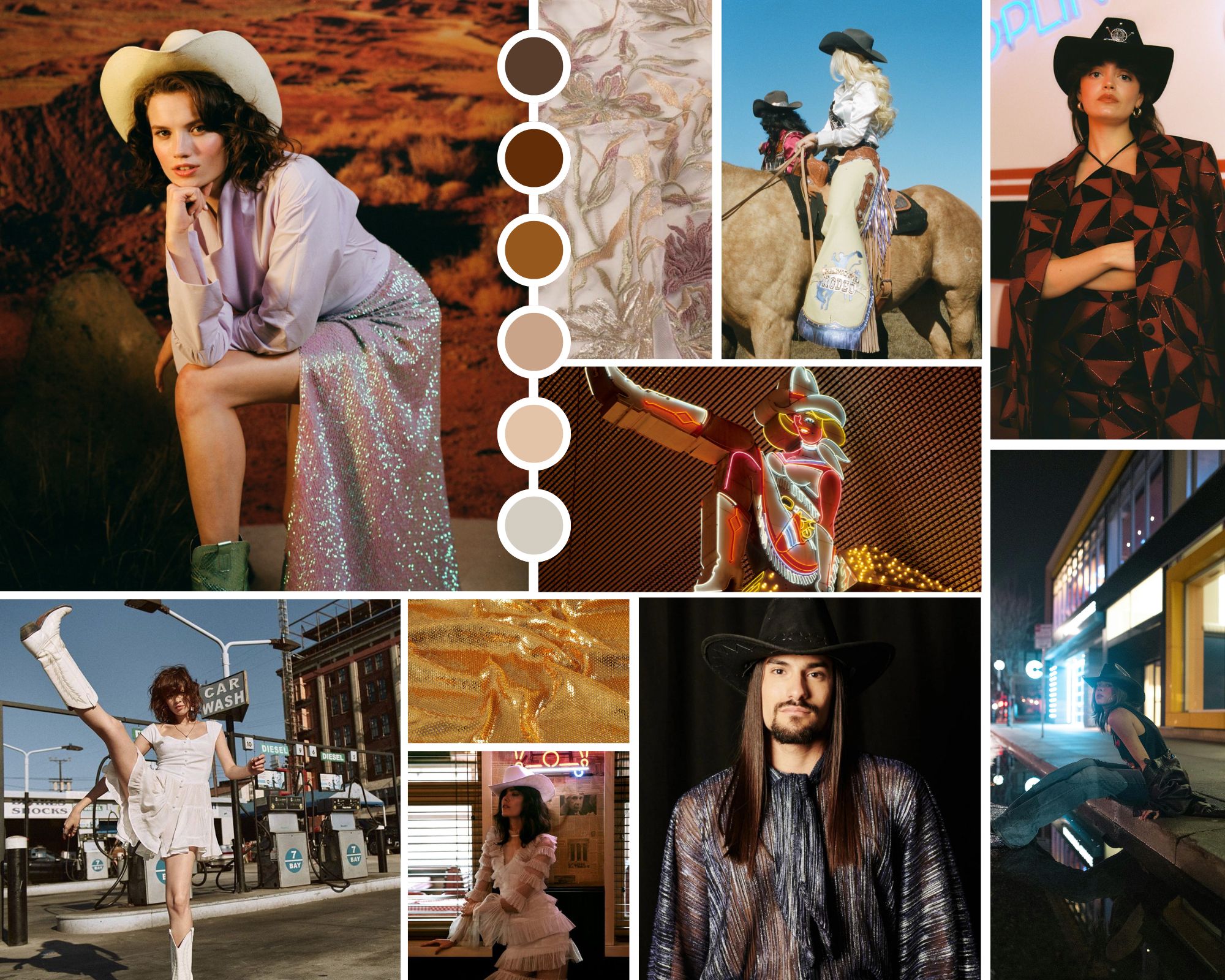
Collage cowboycore. Credits: Joplin Atelier, Free Form Style y Vanessa Mooney’s.
Every year we delight in a new microtrend that shakes up seasonal fashion in a whimsical way. The styling of an influential artist, the latest collection from a luxury brand, a revolutionary album, a blockbuster movie or the trends that accumulate the most hearts and likes on TikTok or Instagram. Social networks, which already create their own crushes, influence the creation of these passing trends that reach consumers like a gale and are established in editorials and fashion bazaars, also reinforcing themselves in the shop windows of fast fashion stores. Another phenomenon that confirms a microtrend is that as soon as they emerge, they disappear just as quickly.
If last year the fashion spotlight illuminated microtrends Barbiecore and Mermaidcore , inspired by the Mattel doll and the magnetism of mermaids, this spring season experiences a change of register, focusing on the aesthetics of Wild West cowboys. And yes, Beyoncé and her new country album have a lot to say about it. Indeed, the cowboycore style leaves the great American plains to capture the imagination of designers, celebrities and the general public with a contemporary interpretation of the western that renews style codes to get closer to the new generation, but maintains its hallmarks.
Why is cowboymania returning? The current resurgence of cowboycore can be attributed to a mix of nostalgia and a desire for authenticity. In an increasingly digital and globalized world, people seek to connect with styles that evoke a sense of history and tradition. Additionally, the trend toward sustainable and artisanal has made classic western garments, many of which are made from durable materials, even more attractive.
Origins of the trend
Cowboycore finds its roots in Western fashion, a recurring aesthetic in popular culture for decades. Classic western films, new adaptations, television series from the 60s and country music, with artists who capture the essence of deep America, have helped maintain this fashion that is perceived as a symbol of freedom and rebellion. Key pieces of this trend include all types of denim clothing, fringed leather and suede jackets, long ruffled dresses, and shirts with floral or check print motifs. As for accessories, country boots, wide-brimmed hats and belts with large metal buckles are essential. All this in a fusion of styles and other trends, such as glam and streetwear, creating unique and eclectic looks. This has been perceived on the streets of Milan and Paris among stylists and influencers who have worn their own interpretation of the cowboy – or cowgirl – aesthetic, coinciding with the main fashion weeks.
Cowboycore has been the protagonist in several fashion collections for 2024 and 2025, demonstrating its relevance and adaptability. Some notable fashion houses that have adopted this trend are, for example, Dior in its Pre- Fall 2024 collection, with fringed leather jackets and decorated cowboy boots. Also Balmain, with Olivier Rousteing incorporating elements of the microtrend in his Spring/Summer 2024 collection, fusing western aesthetics with glam and futuristic details. Calvin Klein reinterpreted the aesthetic in question with clean lines and a neutral colour palette, highlighting durability and classic style. Earlier this year, Pharrell Williams was inspired by the Old West and collaborated with Dakota and Lakota artists on his men’s collection for Louis Vuitton, filling the runway with turquoise stone bolo ties, pointed-toe cowboy boots (printed, by the way , with cacti) and worn jeans that looked like they had been worn during several rodeos. Finally, in the proposals of Ralph Lauren or Roberto Cavalli you can also find elements to the aesthetics of deep America.
 Credit: Joplin Atelier
Credit: Joplin Atelier
Cowboy fashion among influential artists
Celebrities play a crucial role in its popularization. One of the most influential figures to showcase this trend is Beyoncé, who, beyond her new country music album, has incorporated the Wild West style into her stage costumes and music videos. Her ‘ Renaissance ‘ tour has witnessed numerous looks inspired by the trend, with a modern and glamorous touch, cementing her status as the queen of this fashion.
Artists like Lil Nas X and Miley Cyrus have also embraced the western aesthetic, combining western elements with modern touches. The American rapper has made this style a central part of his image, wearing cowboy boots and hats in his performances and music videos. Kacey Musgraves, a country star, has also popularized cowboycore, mixing traditional western elements with bright, futuristic details in her stage outfits. Her style has influenced both country and mainstream fashion.
The relationship between fashion and music is deep and symbiotic, and cowboycore is a clear example of this. Country music has been a constant source of inspiration for western fashion, and vice versa. Artists like Orville Peck, with his enigmatic style and cowboy mask, have brought the style to new audiences, fusing Western aesthetics with a more theatrical, but sophisticated touch at the same time.
The pop genre has also adopted elements with artists such as Billie Eilish and Post Malone incorporating cowboy boots and denim jackets into their personal styles, showing the versatility and universal appeal of this trend.
Beyond music
The impact of the microtrend extends beyond fashion and music, infiltrating other cultural spheres such as cinema, television and the visual arts. Recent movies and television series, such as “Yellowstone” and “The Power of the Dog “, have presented characters with styles that reflect Western fashion, contributing to its resurgence.
In contemporary art, the cowboycore aesthetic manifests itself in works that explore themes of identity, nostalgia and rebellion. Visual artists such as Richard Prince have incorporated elements of the west into their works, creating a dialogue between popular culture and high-end art.
These are just some examples of how this microtrend has demonstrated its ability to evolve and adapt to new contemporary languages, creating a unique fusion of styles. From the catwalks to the streets, and from music to art, cowboycore continues to influence and be influenced by various cultural spheres. Its enduring appeal and ability to reinvent itself ensure that it will continue to be a relevant force in fashion and beyond.
At Gratacós we have found in the current collection some fabrics that subtly refer us to this aesthetic. Here we leave you our inspirations:




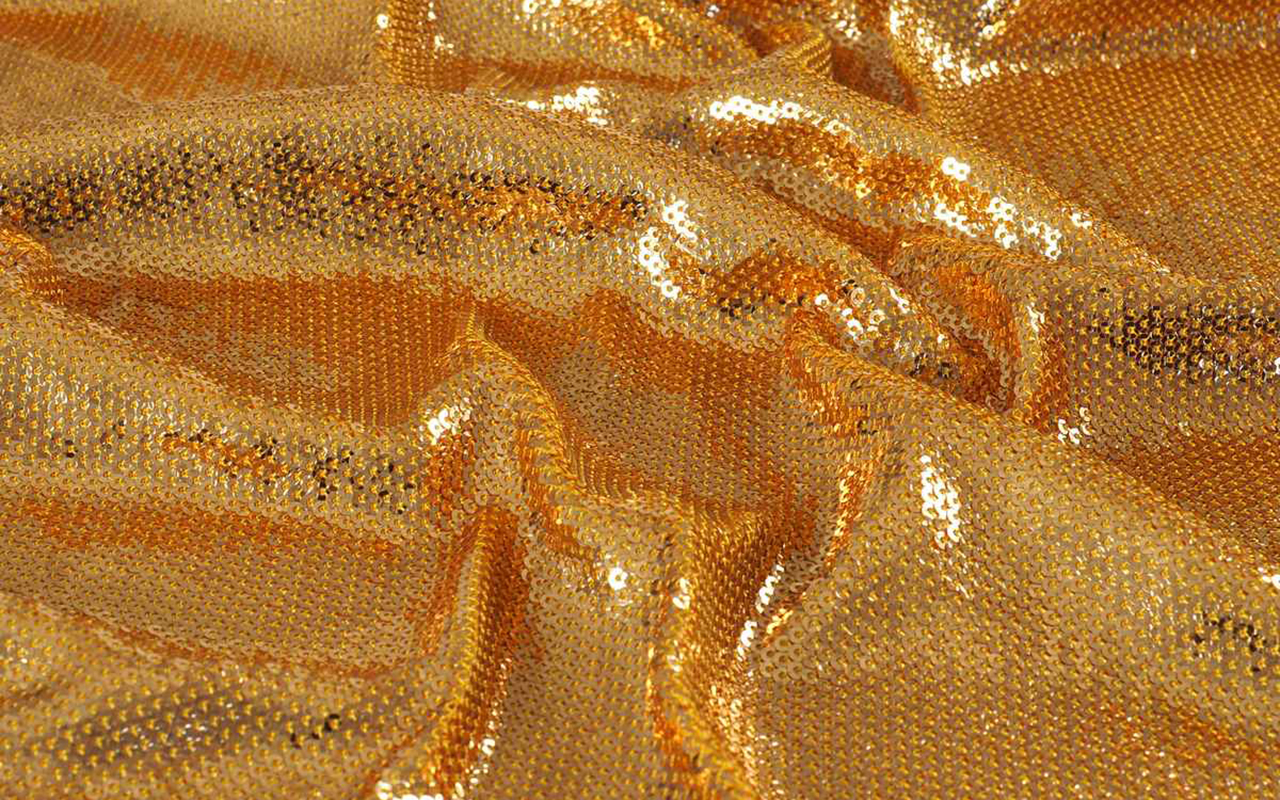
 Exhibition ‘Dressing a Garden’. All photos published are provided by: Museum of Costume CIPE.
Exhibition ‘Dressing a Garden’. All photos published are provided by: Museum of Costume CIPE.
It has been a while since we recommended an exhibition, and we have just found a surprising exhibition that connects head-on with some of our most recurring inspirations and, specifically, with the floral theme of the 2024 Lookbook. The Madrid Costume Museum has just released the ‘Dressing a Garden’ exhibition, an exhibition curated by Gema Batanero that focuses on connecting nature with fashion through floral motifs as the backbone.
A historic binomial
Since ancient times, nature, and especially floral motifs, have been a constant source of inspiration for human beings. Like the self-portrait, flowers have focused attention and have become the first themes that humanity has captured in art and in all its cultural manifestations. This connection has endured over the centuries, especially in the field of fashion and interior design, where decorating with flowers meant a way of maintaining ephemeral beauty and union with the natural environment: the gardens, the countryside, the forests… In fact, each era has had its peculiar way of linking fashion and textiles with the language of flowers and doing so in an extraordinary way.
Starting from this historical premise, the exhibition “Dressing a Garden” at the Costume Museum explores how floral motifs in fashion evolved between the Baroque and the Enlightenment. This exhibition reveals how these floral representations reflect the profound changes in the relationship between humans and nature and the emergence of new artistic, scientific and philosophical ideas. Furthermore, the exhibition highlights how commercial exchanges and technological advances influenced the rapid transformation of these floral designs, making them a key testimony of the aesthetic taste of the 18th and early 19th centuries. Through the leitmotif of flowers, the exhibition also vindicates the study of creative and technical processes as a fundamental part in understanding the phenomenon of fashion, raising its transversality and continuous dialogue with different cultural fields.
 Detail of an 18th-century dress from the exhibition ‘Dressing a Garden’. All photos published are provided by: Museum of Costume CIPE.
Detail of an 18th-century dress from the exhibition ‘Dressing a Garden’. All photos published are provided by: Museum of Costume CIPE.
Floral motifs in more than a hundred pieces
The exhibition includes around 120 pieces, the core of which are collections of historical clothing and textiles from the 18th century and part of the 19th century from the Costume Museum. These pieces are accompanied by documentary and bibliographic collections, painting, ceramics and decorative arts from institutions such as the National Prado Museum, the National Archaeological Museum, the National Museum of Decorative Arts and the Royal Botanical Garden.
The first stop on the tour is titled “The Forest of the Furies” and places the visitor in the 18th century with an explosion of textile creativity: unusual fabrics, also called furies, due to the passionate and vibrant character of their decorative motifs. The exhibition continues with “A naturalistic still life”, which shows how, during the 1830s, the fanciful bizarre vegetations gave way to much more naturalistic representations. Starting in the 1940s, “The Line of Beauty” marks the evolution towards the Rococo style, characterized by its lightness and refinement.
Next, “The Flowers of Enlightenment” addresses the development of Enlightenment ideas and the return to the ideals of the classical world, marking a profound aesthetic change with respect to Rococo taste. “Gardens of the East” discusses how indianas, a textile phenomenon from India and the Middle East, made its way to Europe. The note of bucolic celebration is provided by “A country party”, which addresses the genre of the gallant party in Rococo and alludes to the social enjoyment of the countryside. Finally, the tour culminates in “The Return of Spring”, a space that explores how the relationship with nature is a constant in the lives of human beings, and how floral motifs, although they experienced an unprecedented boom in the centuries XVIII and XIX, are repeated cyclically throughout the history of fashion.
The exhibition is completed by a catalogue created by the General Subdirectorate of Publications and Palaces and Museums, which further develops the areas covered in the exhibition. The exhibition ‘Dressing a Garden’ can be visited for free until September 29th at the Madrid Costume Museum. A good opportunity to delight in this inspiring pairing: nature and fashion.
We took advantage of the exhibition to bring out some of our floral fabrics, which maintain a similar dialogue with some pieces on display. Let’s give rein to our imagination!



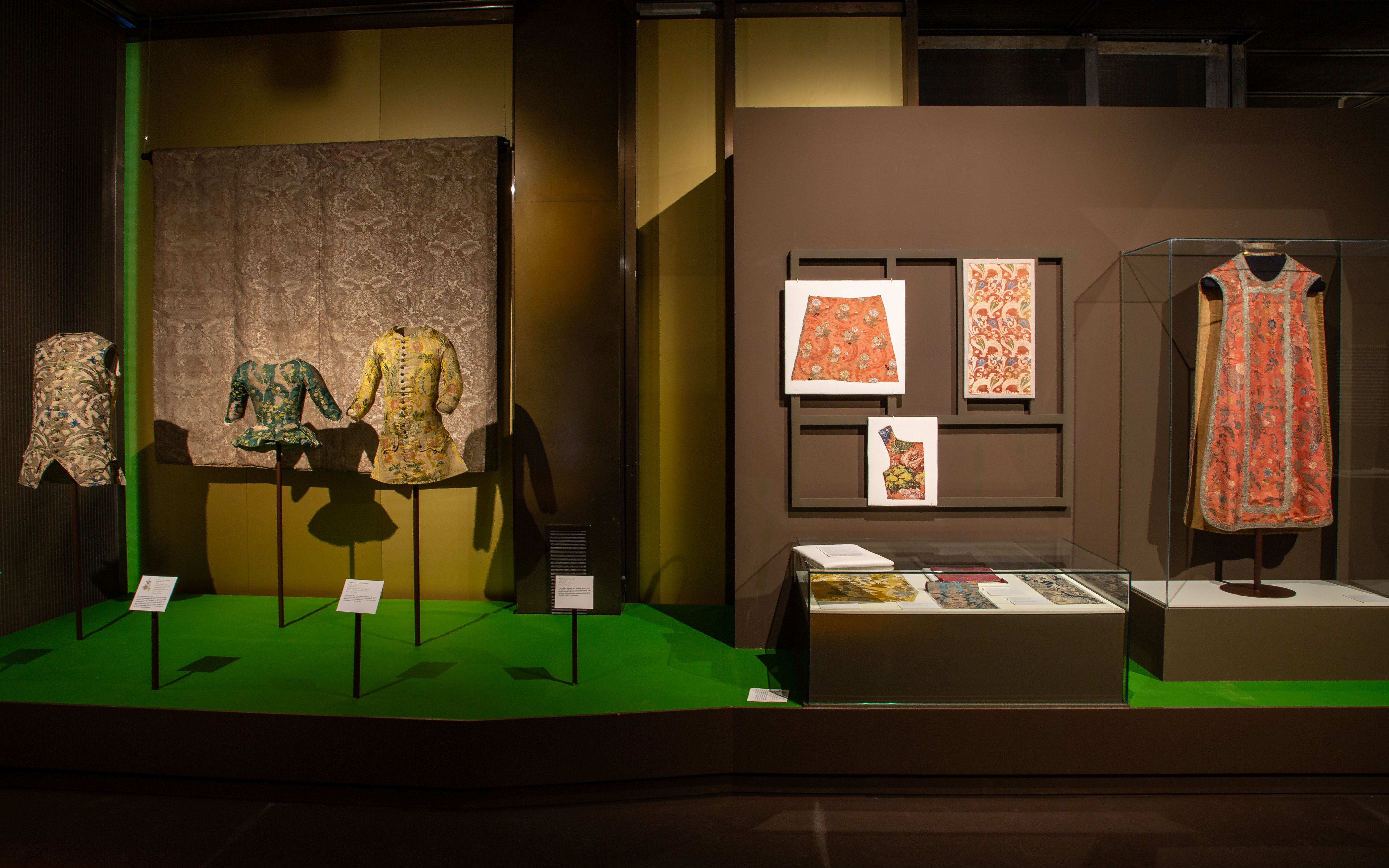


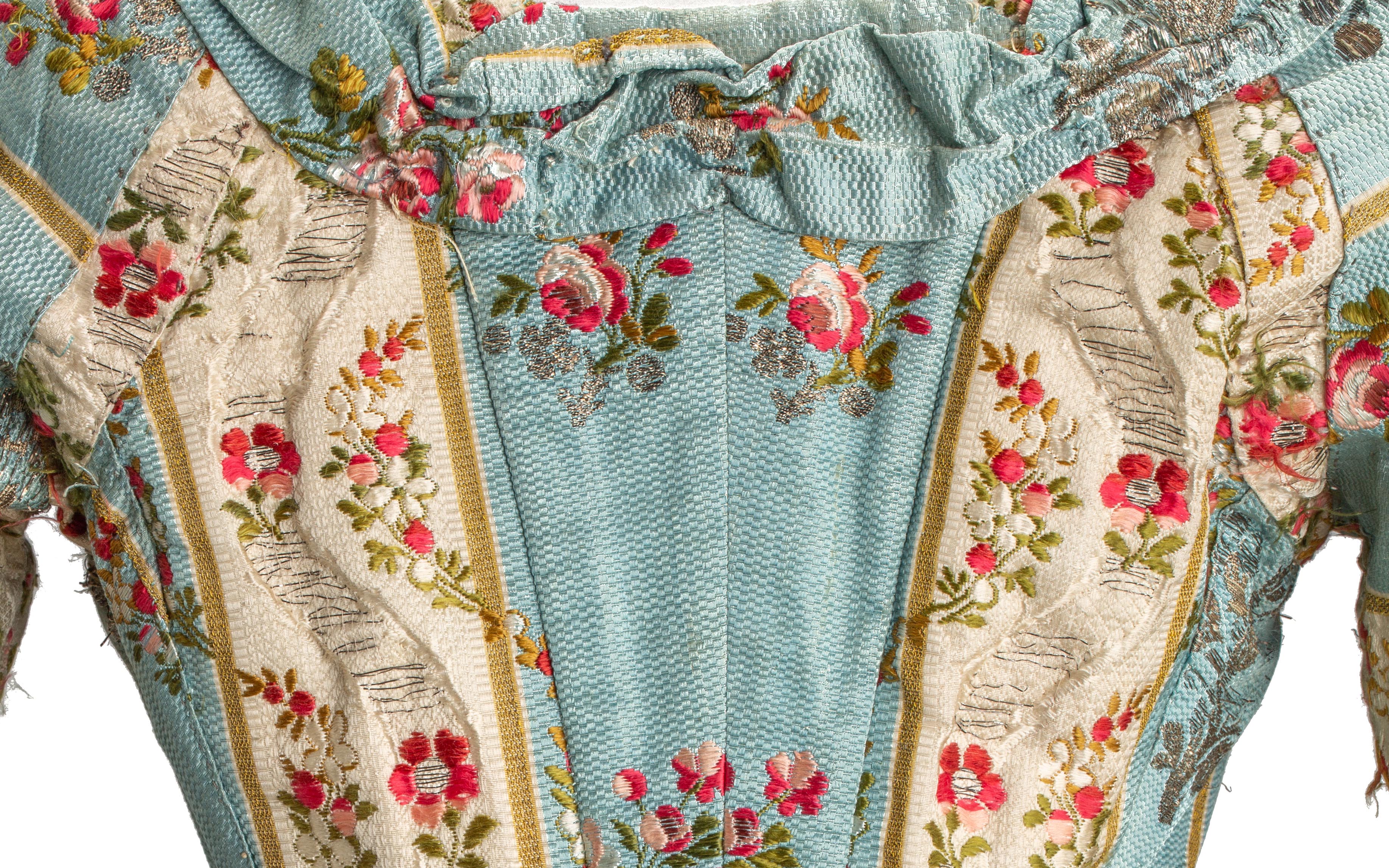
Sorry, this entry is only available in European Spanish.
Sorry, this entry is only available in European Spanish.

The new SS24 collection is already blooming in all its splendor. We brought it to you at the end of February coinciding with the end of the winter sales, but now we provide you with all the details of this exciting proposal that was very well received when it was presented at Première Vision Paris.
Under an inspiring concept, Hanami , the new collection focuses on the Japanese tradition of appreciating the beauty of flowers. This contemplative practice coincides with the beginning of spring and invites us to value the art of flowering. Hanami , which literally means “looking at the flowers”, carries with it a very representative image in Japan: that of the cherry blossom trees, known as sakura, which cover their parks and mountains with a pink mantle every spring for a very limited period that coincides with the beginning of this season.
This particular tradition dates back centuries, when the flowering of cherry trees marked the beginning of Spring and, therefore, signaled the ideal time to plant rice, a crucial food for the Japanese. During this period, cherry trees were considered sacred beings and the souls of the mountain gods were believed to reside in them. According to local beliefs, when the pink sakura flowers were in full bloom, the deities would come down to the villages and turn into rice fields to assist in rice production. Nowadays, with each new flowering season, thousands of Japanese gather under cherry trees, whether in parks, gardens or mountains, and enjoy a picnic surrounded by sakura, while a shower of delicate flowers turns everything pink.
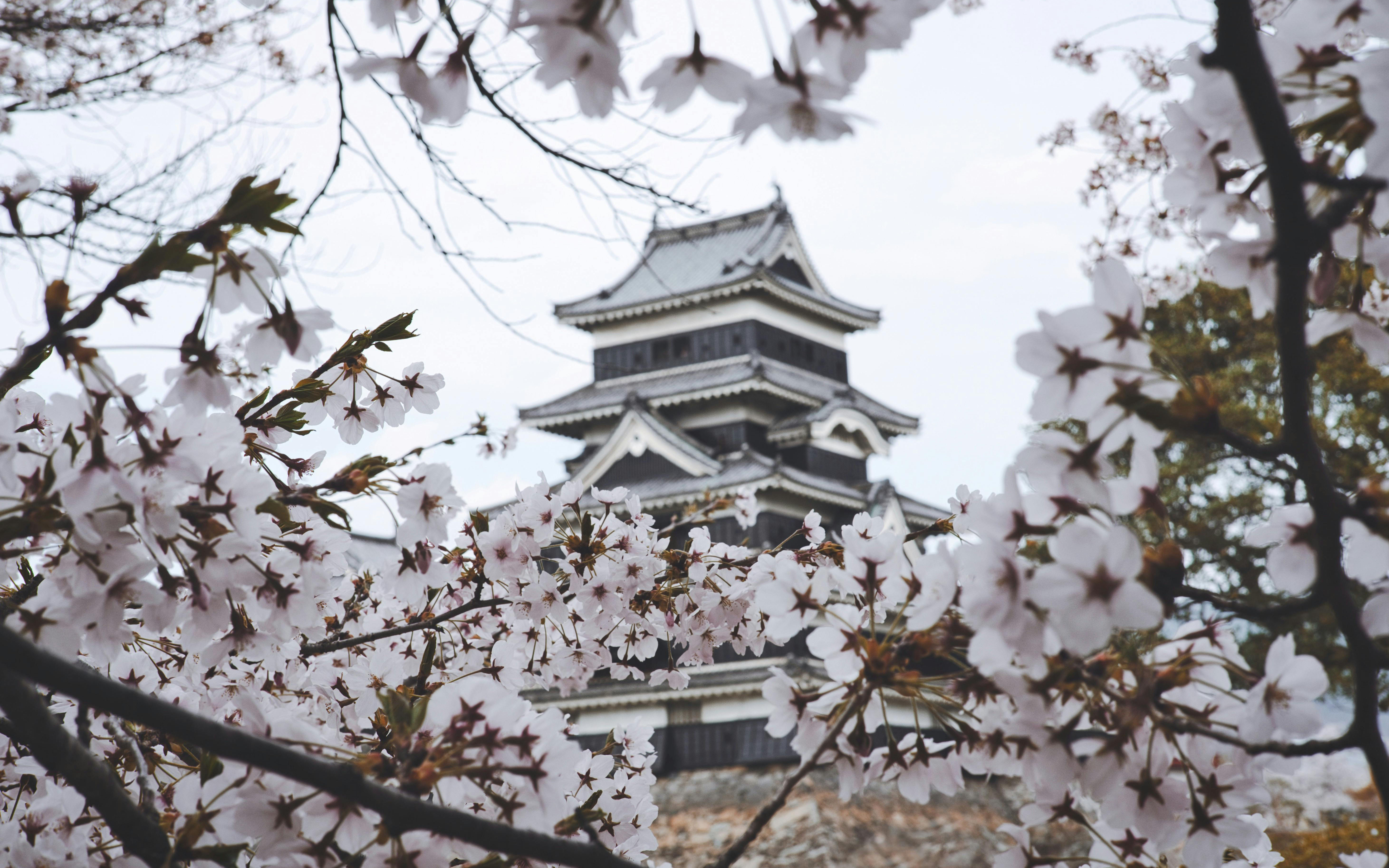
Broadly speaking…
Returning to the proposal, the new Hanami collection maintains this double duality: it invites us to pause and reflect, but it is also a moment to let ourselves be carried away by fantasy and the evocative power of nature, activating all our senses.
This season, flowers are the clear protagonists of the collection, but we go much further. Plant motifs, organic reliefs, natural volumes and prints inspired by the wild nature of the fields or the multicoloured flora of urban gardens, all taken care of in detail. From the precious work of the botanical architects to the sensitivity of the signature florists, all of this makes up a poetic, stimulating and bold collection that appeals to emotions through creativity. At Gratacós, we do not understand fashion without art and culture, and we make craftsmanship one of our fundamental pillars.
Summer 2024 collection in detail, the colour becomes more vivid and bright, playing with different harmonies that reflect the light and contrasts present in nature. The fabrics are carefully selected in terms of materials, composition and combinations that recreate organic shapes. We once again give a new dimension to quality, because it is a necessary, clear and real value that distinguishes us.
“We don’t understand fashion without art and culture, and we make craftsmanship one of our fundamental pillars.”
Colours
The Gratacós proposal immerses itself in a world of colour, where various harmonies intertwine to create fresh and dynamic combinations. The contrasting colour palette will transform the fabrics, offering a richness of nuances that will energize the final results. The colours selected to star in the new season will give life to poetic, timeless and versatile collections, transmitting feelings through an intriguing interaction of strength, femininity and beauty, captured in the different textiles.
These colours transport you to a magical landscape, evoking a digital Eden where precious tones work with a enticing freshness of cold light. In times of uncertainty, who doesn’t yearn to use the power of highlighter pink, yellow, blue or green in a sheer frou-frou dress to experience a moment of happiness?
Fabrics
This season, the pleasure of creating and designing will be our impetus to develop new highly crafted fabrics with a sophisticated look. Our fabrics will be characterized by a renewed importance in the quality of the products, seeking a necessary and real authenticity. We have opted for soft lines, using light and transparent fabrics adorned with sequins to evoke the shine and clarity of water. This sense of summer vibrancy is reflected in graphic bursts of colour that extend throughout the collection.
Transparency will play an important role, conveying a fragility that is only apparent. For this reason, we have created light fabrics in various versions and transparencies, with sophisticated effects for a line of products with sweetened fantasies.

Aspects
This season’s fabrics magnificently explore texture, with volumes that are delicate in appearance, but solid in their construction. The creative department has worked to give the items a three-dimensional dimension, taking advantage of the twists of the yarns and the fantasies of the threads with a more organic appearance. The importance of the reliefs and embossed finishes stands out, with ultralight padding ideal for summer.
Jacquard takes on a leading role this season, presenting repetitive geometries and designs with sequential rhythms without interruption. We often overlook the technical complexity of small motifs, which is why it is crucial to revalue them. In addition, we have worked to create laminates with beautiful and sophisticated reflections, amplified by light to obtain a striking and elegant shine. In both jacquards and embroidery, the result will be dazzling, with shiny surfaces thanks to lame, iridescent threads and sequins.
The embroidery technique, as a universal method of beautification, is back in fashion. They bloom into unexpected and beautiful creations, with free settings and vibrant, fresh colours.
Designs
Overall, geometry will continue to be a prominent theme this season, especially as we explore flat and smooth handcrafted geometries, infused with special touches to create essential ingredients for this upcoming summer. The graphics in general will be soft, fresh and exquisite, with careful work on the designs.
Florals will play an important role, like a sweet perfume that permeates the entire collection, through the abundant and varied use of floral prints. Botanical motifs centered on leaves, vegetal ornaments and ambiguous jungles will also be highlighted.
Finally, in this new season, it is essential to mention the influence of art in the designs of the collection, as well as the influences of the metaverse, which present natures that hybridize between the real and the digital.
From Gratacós we invite you to discover Hanami , our particular Eden.
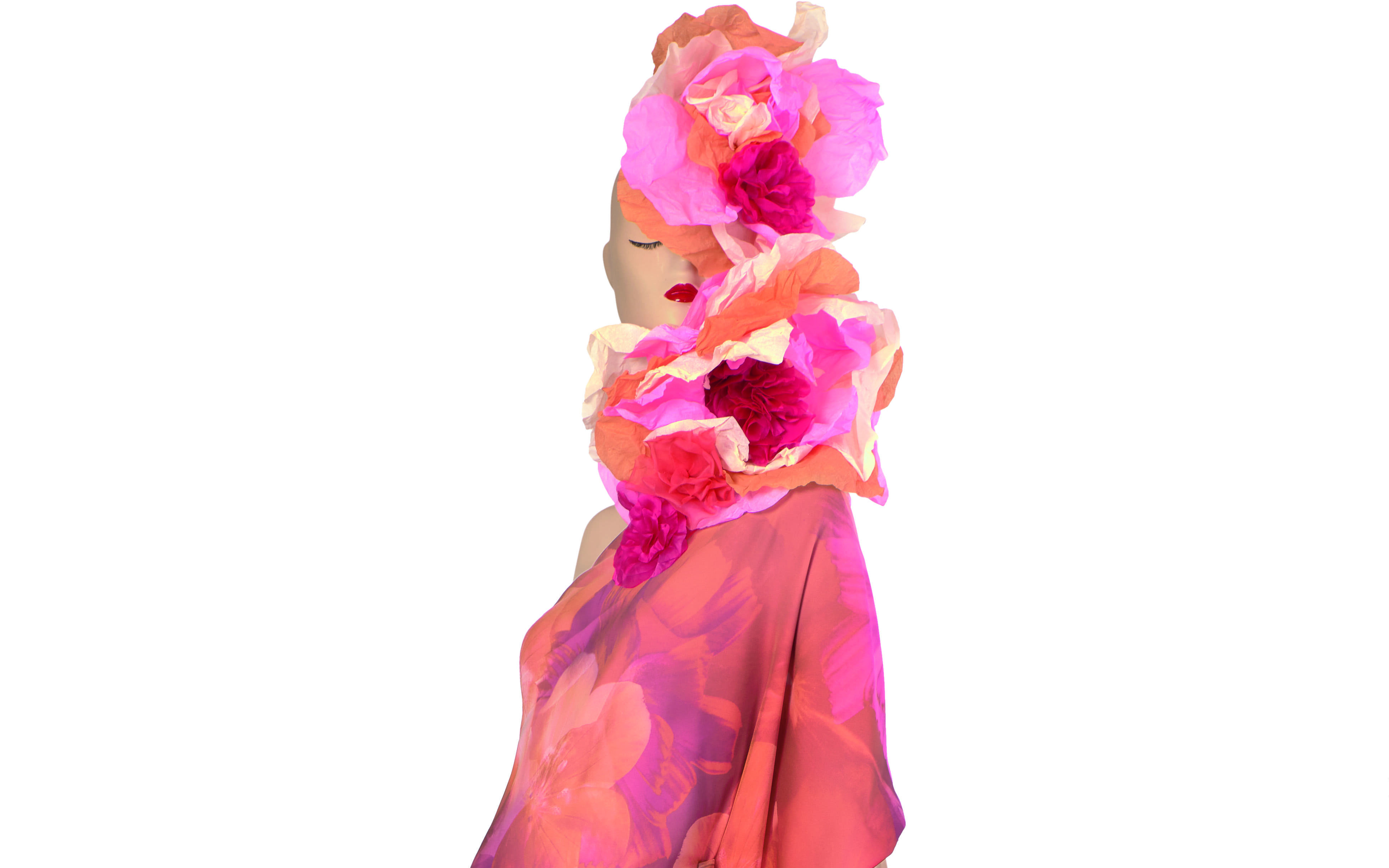
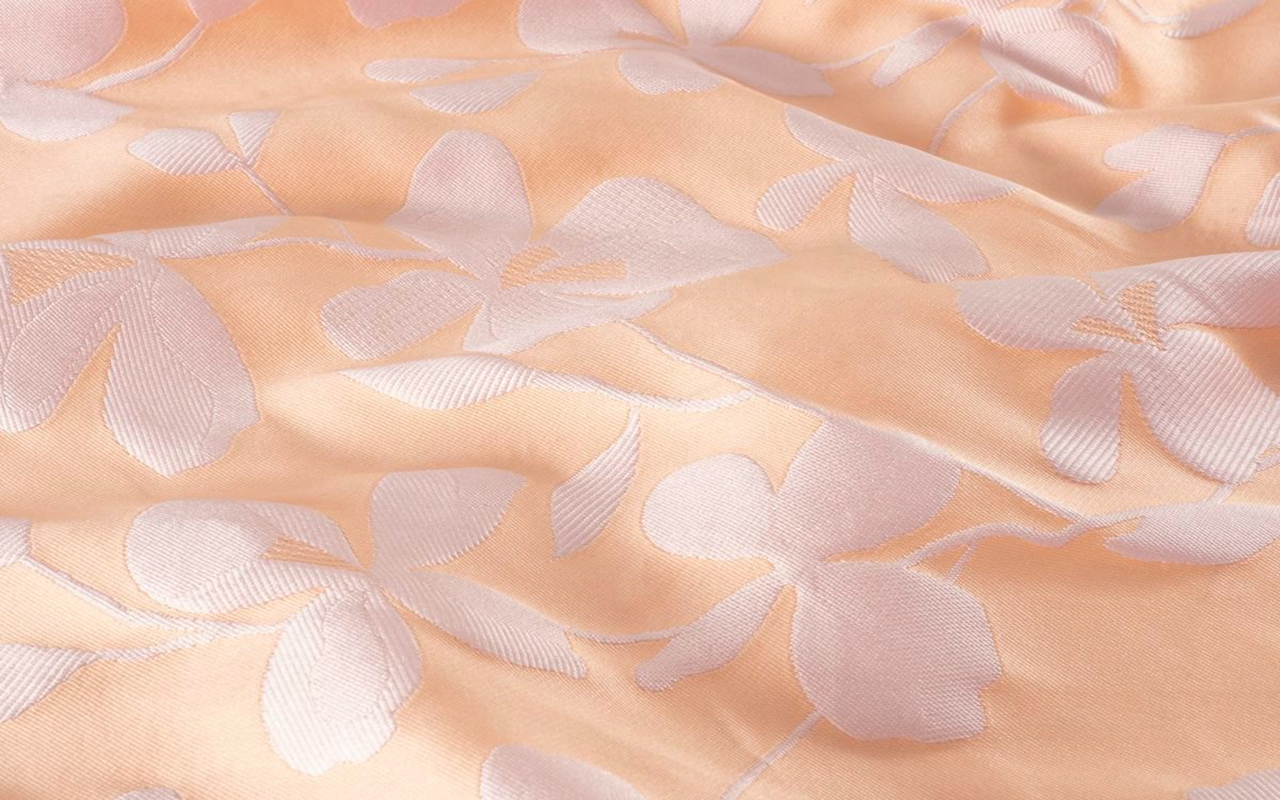
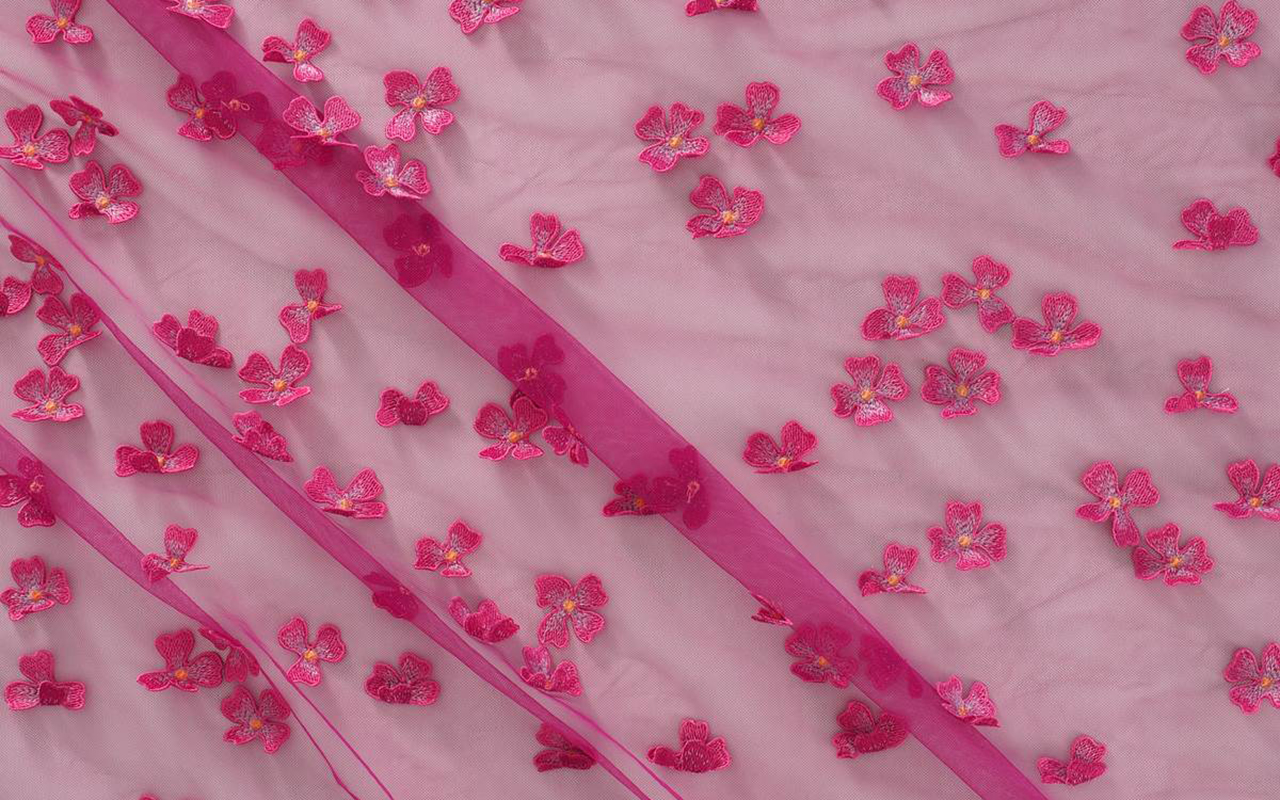
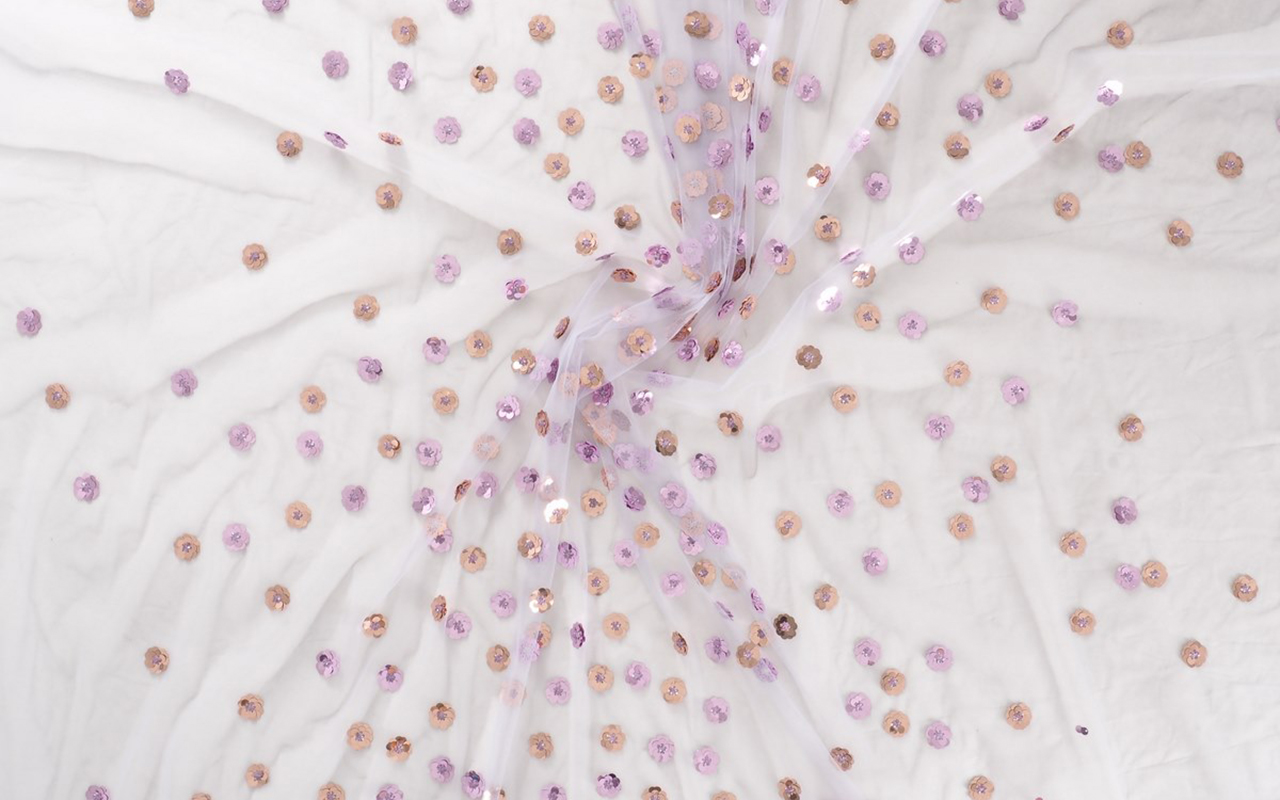
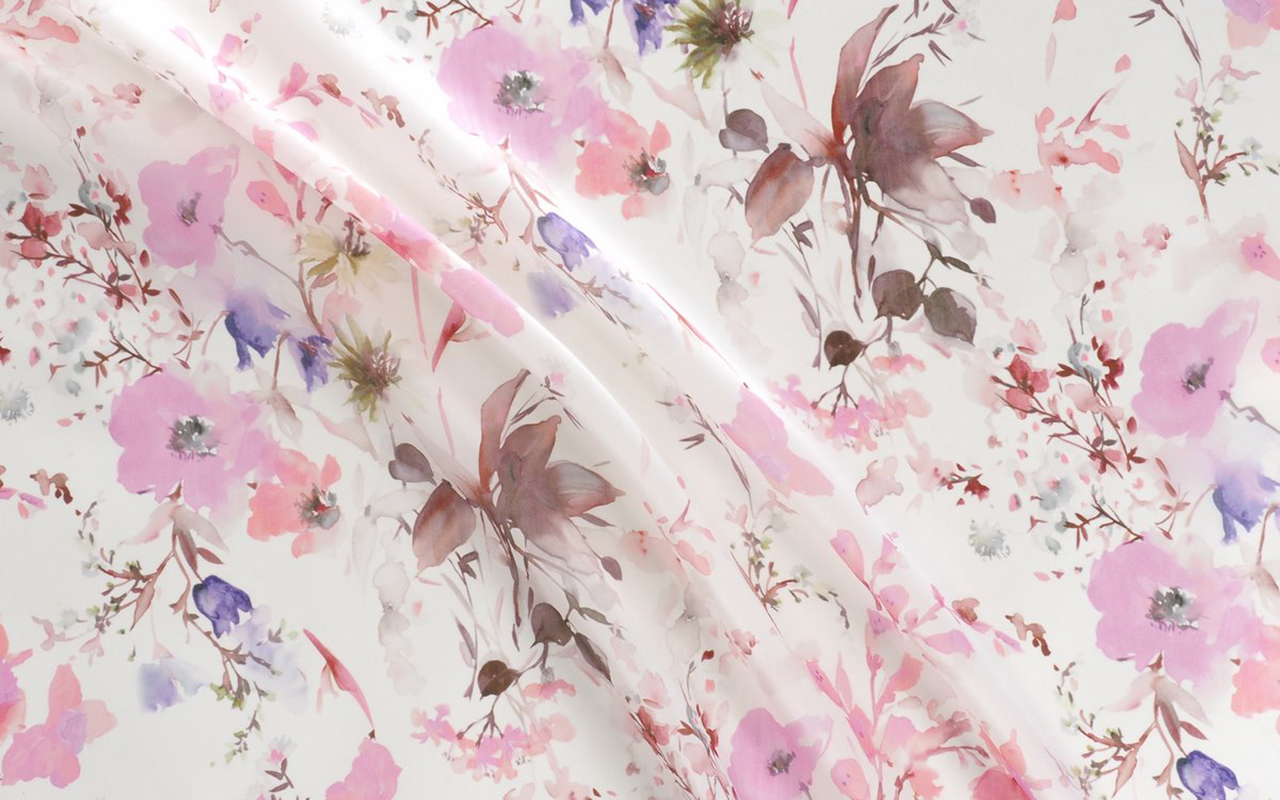
 Collage: 1. Rodarte, 2. Gonçalo Peixoto, 3. Mariano Moreno, 4. ON RUSH, 5. Joplin Atelier, 6. Acuamona. Courtesy of the brands
Collage: 1. Rodarte, 2. Gonçalo Peixoto, 3. Mariano Moreno, 4. ON RUSH, 5. Joplin Atelier, 6. Acuamona. Courtesy of the brands










































